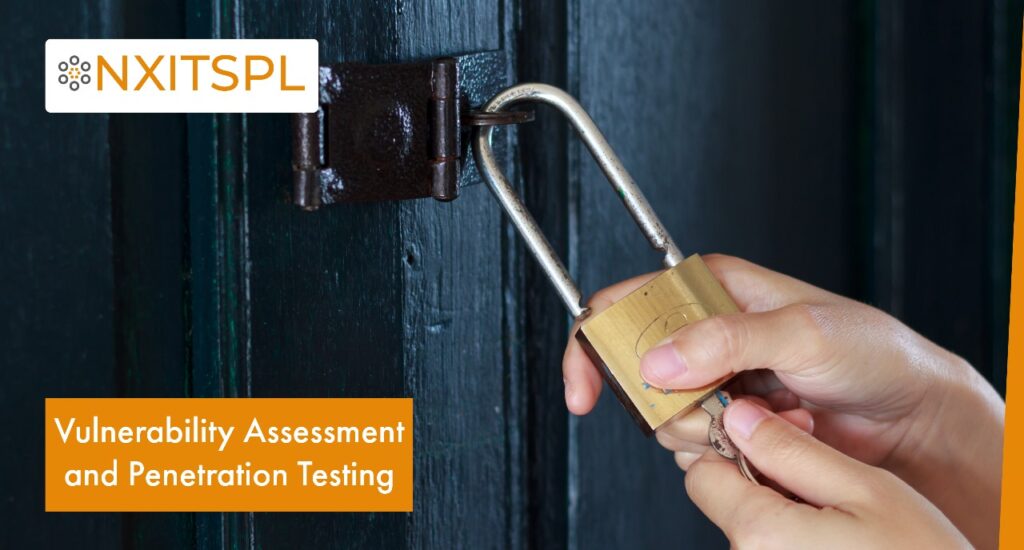Vulnerability Assessment and Penetration Testing (VAPT) is a comprehensive cybersecurity approach designed to identify, evaluate, and address vulnerabilities within an organization’s IT infrastructure. It is an umbrella term that combines two distinct but interrelated processes to improvise the overall security posture.
- Detection – Vulnerability Assessment (VA):
- Objective: This step involves detecting and analyzing possible flaws in the networks, applications, hardware, and software of the information systems in a methodical and organized manner.
- Methodology: Use of automated tools and manual inspections to scan and analyze the IT environment, searching for known vulnerabilities, misconfigurations, and security gaps.
- Outcome: A detailed report outlining identified vulnerabilities, their severity levels, and recommendations for remediation.
- Defense – Penetration Testing (PT):
- Objective: This step involves evaluating the efficacy of current security mechanisms and finding weaknesses not picked up by automated methods by simulating real-world cyberattacks.
- Methodology: One can use ethical hacking techniques to exploit identified vulnerabilities in a controlled manner, emulating the tactics, techniques, and procedures (TTPs) of potential adversaries.
- Outcome: The above procedure can potentially throw light on the security posture, potential points of compromise in the IT infrastructure. Furthermore, at this point it will also be prudent to generate an actionable report outlining the steps taken, vulnerabilities exploited, and recommendations for strengthening defenses.
Through the integration of penetration testing and vulnerability assessment, VAPT can offer you a comprehensive understanding of your organisation’s cybersecurity posture. It gives you the ability to see vulnerabilities early and fix them before hackers take advantage of them. This systematic and ongoing process is crucial in today’s cybersecurity landscape, where cyber threats continually evolve, and organizations must remain vigilant to safeguard the sensitive data and digital assets.
Proactive Defense: The Imperative Role of VAPT in Modern Security
Vulnerability Assessment and Penetration Testing (VAPT) is a comprehensive cybersecurity approach designed to identify, evaluate, and address vulnerabilities within an organization’s IT infrastructure. It is an umbrella term that combines two distinct but interrelated processes to improvise the overall security posture.
- Detection – Vulnerability Assessment (VA):
- Objective: This step involves detecting and analyzing possible flaws in the networks, applications, hardware, and software of the information systems in a methodical and organized manner.
- Methodology: Use of automated tools and manual inspections to scan and analyze the IT environment, searching for known vulnerabilities, misconfigurations, and security gaps.
- Outcome: A detailed report outlining identified vulnerabilities, their severity levels, and recommendations for remediation.
- Defense – Penetration Testing (PT):
- Objective: This step involves evaluating the efficacy of current security mechanisms and finding weaknesses not picked up by automated methods by simulating real-world cyberattacks.
- Methodology: One can use ethical hacking techniques to exploit identified vulnerabilities in a controlled manner, emulating the tactics, techniques, and procedures (TTPs) of potential adversaries.
- Outcome: The above procedure can potentially throw light on the security posture, potential points of compromise in the IT infrastructure. Furthermore, at this point it will also be prudent to generate an actionable report outlining the steps taken, vulnerabilities exploited, and recommendations for strengthening defenses.
Through the integration of penetration testing and vulnerability assessment, VAPT can offer you a comprehensive understanding of your organisation’s cybersecurity posture. It gives you the ability to see vulnerabilities early and fix them before hackers take advantage of them. This systematic and ongoing process is crucial in today’s cybersecurity landscape, where cyber threats continually evolve, and organizations must remain vigilant to safeguard the sensitive data and digital assets.
